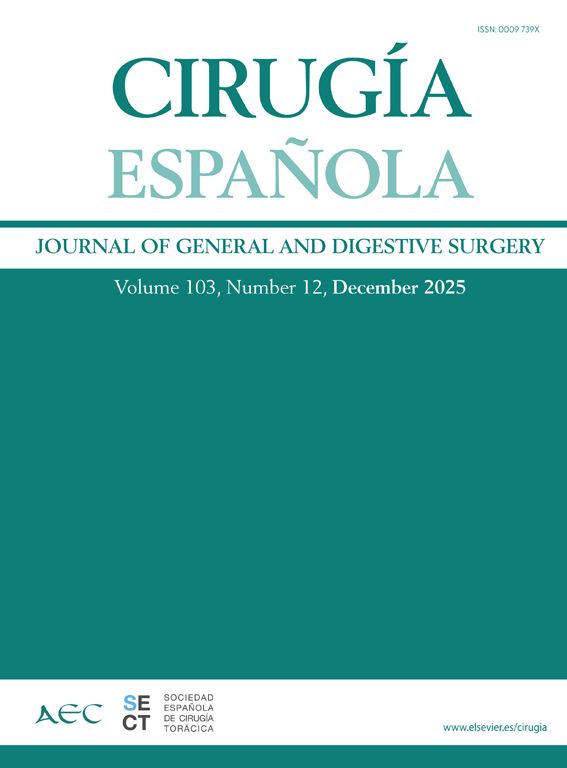The management of locally advanced colon cancer commonly requires complex surgeries, which often include multivisceral resections and are far from what could be defined as a standard colectomy. Despite performing a highly complex procedure to obtain complete cytoreduction (requiring extra effort for both the patient and surgeon), disappointment sets in when locoregional or peritoneal recurrence is detected during follow-up, affecting the patient’s prognosis. As surgical oncologists, the question we must ask ourselves is whether we can do more than macroscopic cytoreduction during surgery.
Various strategies have been used to prevent peritoneal recurrence in locally advanced colon cancer, one of which involves the administration of hyperthermic intraperitoneal chemotherapy (HIPEC) at the time of surgery. This intraoperative adjuvant treatment has recently gained interest thanks to the favorable results published in the HIPECT4 trial.1
The presence of peritoneal disease in colon cancer is the most lethal metastatic condition compared to other systemic metastases.2 Thus, it is important to recognize and attack those conditions that pose a high risk of developing localized or diffuse metachronous peritoneal carcinomatosis, such as stage pT4 colon cancer. According to different publications, these present an incidence that can range from 25%–36%.3
Currently, the management of T4 tumors is fundamentally based on resective surgery (not always performed at referral hospitals) and subsequent adjuvant chemotherapy based on fluoropyrimidines and/or oxaliplatin. And, although this approach is commonly used, it has not demonstrated benefits in reducing peritoneal recurrence rates or survival for patients with high-risk stage II disease.4,5 However, an attractive strategy that has recently been debated this year is the administration of neoadjuvant chemotherapy in cT4 colon cancer. Published this year, the results of the multicenter FoxTROT6 clinical trial demonstrate a benefit in reducing the 2-year rate of disease recurrence with the use of FOLFOX × 3 cycles prior to surgery.
As this editorial began, surgeons dedicated to advanced colon cancer must go one step further than mere surgical resection. In this context, the use of HIPEC during surgery with the intention of preventing peritoneal metastasis has been evaluated in 2 well-designed clinical trials, COLOPEC7 and HIPECT4,1 with opposing results. COLOPEC7 failed to demonstrate any increase in peritoneal recurrence-free survival between the surgery/adjuvant therapy group and the surgery/HIPEC/adjuvant therapy group. In it, oxaliplatin was used for 30 min, and 62% underwent diagnostic laparoscopy after 18 months. Results from the HIPECT41 trial demonstrated that the use of HIPEC with mitomycin C for 60 min improved locoregional control 3 years later. Both groups were well balanced, and there was no increase in toxicity or morbidity for the experimental group.
When we talk about adjuvant or prophylactic treatments, 2 fundamental points to keep in mind are: 1) there will be a percentage of patients who will be overtreated; and ii) prophylactic or adjuvant treatment, apart from being effective, should not increase patient morbidity. Regarding the first point, when we evaluated the results of the 2 positive trials to prevent peritoneal recurrence published this year, we observed that in the FoxTROT6 trial up to 24% of the patients treated were low-risk stage II, while in the HIPECT41 trial the percentage of over-treated patients was estimated at 32%. Although it seems high, this rate is within the results published for the degree of accuracy of imaging tests to define stage cT4. Regarding the second point, although in FoxTROT6 the toxicity was minimal and in HIPECT41 the increase in morbidity was zero, we must always weigh the risk and overtreatment with the benefit that we are going to obtain. This must be included in the decision-making process with our patients when we administer treatment with prophylactic intent.
We should consider modifying the therapeutic strategy for patients with locally advanced colon cancer. Following the publication this year of both clinical trials,1,6 multidisciplinary committees are deliberating the need for induction chemotherapy and subsequent cytoreductive surgery associated with HIPEC. This strategy has been actively discussed this year in very diverse fora, both surgical and oncological.
In conclusion, we can consider that we have additional options to use in patients with locally advanced colon cancer, beyond mere resection and subsequent chemotherapy. The use of a prophylactic approach to reduce the risk of peritoneal recurrence should be effective with minimal or no increase in morbidity. In this context, the use of neoadjuvant therapy with FOLFOX as well as HIPEC with mitomycin C could be coupled with these concepts, which would lead us, with evidence in hand, to go beyond the limits of “this is the way it has always been done.”
FundingThe author has no funding to declare.
Conflictos de interésNo presenta conflictos de interés.






